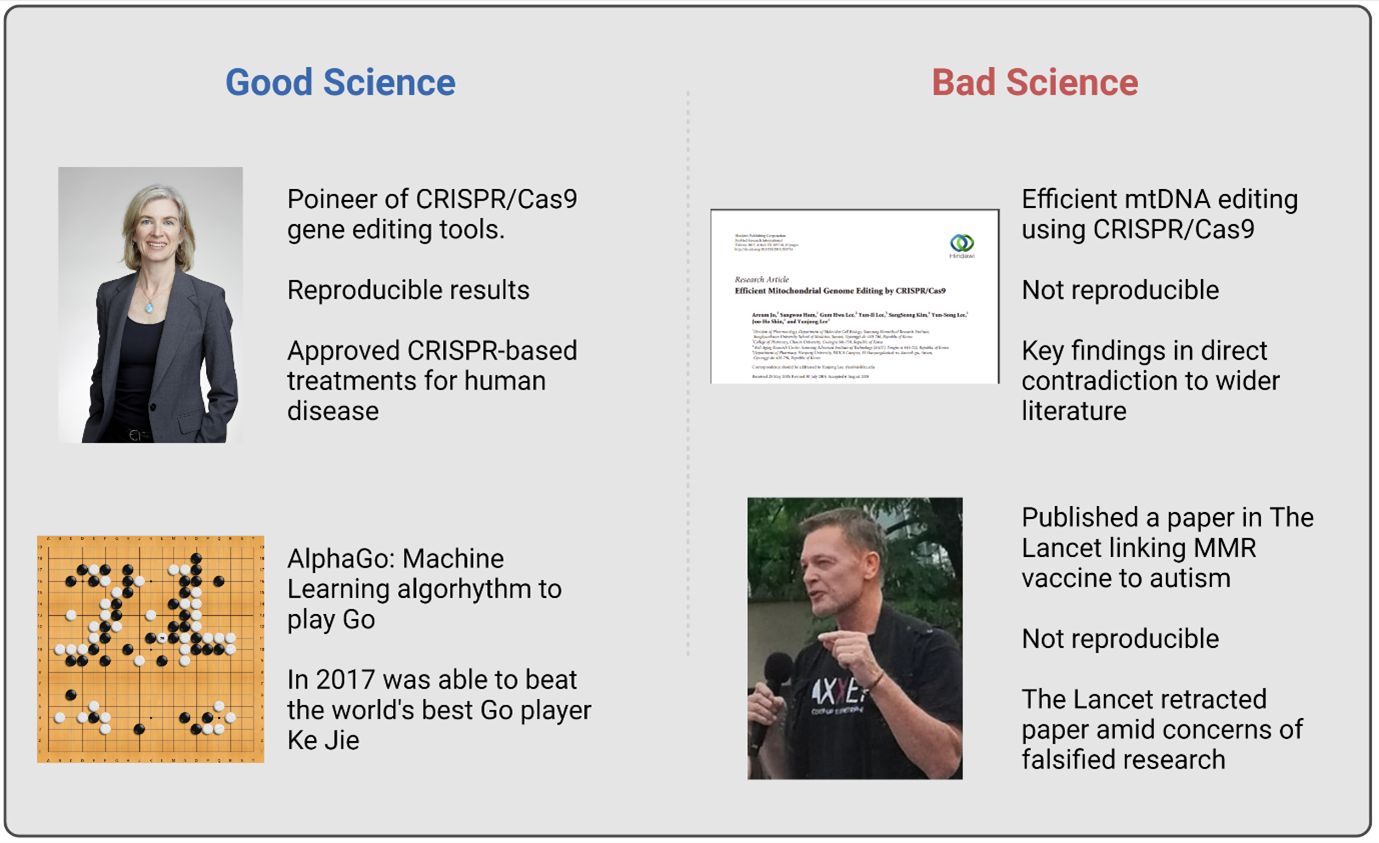About the author:
Alan Foley is a PhD student within the EU funded Marie Sklodowska-Curie STACCATO project. His research focusses on single cell mitochondrial analysis in the biopharmaceutical industry.

As an Early Stage Researcher within the STACCATO project, I engage in scientific research every day. However, because of the vastness of science, I am uncomfortable calling myself a scientist in any field other than the area I work in. Nevertheless, we’ve endlessly seen during the last pandemic the word “scientist” used by governments to give credence to their public health measures.
“Scientist’s say…” is a faceless term that neglects the broad range of credence in the scientific community. The truth is science can be “good” and “bad” for many reasons. Here, I’ll focus on a key tenant: is the research reproducible?
Good Science
An example of “good science” is the development of the CRISPR-Cas9 genome editing system. In the past 2 decades, it has emerged as the bona fide mode of choice for genome editing. The ability to change DNA sequences with ease and precision has huge implications across science. Interestingly, the story starts with a yoghurt researcher wanting to protect yoghurt bacteria from viruses. They uncovered an innate bacterial immune system that cuts viral DNA based on memorised sequences (ASCB, 2014). “Scientists” created a CRISPR-Cas9 system that could be programmed to cut specific sequences of DNA by changing the memorised sequence. Later, this was adapted to introduce precise changes to the DNA sequence at a specific location (Adli, 2018). The best way to confirm science is “good” is by observing its reproducibility. In other words, does it work? Over the last decade, CRISPR-Cas9 has introduced targeted DNA editing to cure cancer, treat genetic diseases, improve food crop production, develop sustainable fuels with many many more applications (Nidhi et al., 2021). We see it as “good” science because it has been proven.
Bad Science
Since science can be called “good” when it’s reproducible, it can also be called “bad” when it’s not. One such example is the paper “Efficient Mitochondrial Genome Editing by CRISPR/Cas9” by Areum Jo et al., 2015 (Jo et al., 2015). They claimed CRISPR-Cas9 DNA editing of mitochondrial DNA; something that had never before been performed. One difficulty is RNA sequences vital for CRISPR/Cas9 do not spontaneously localise to mitochondria; however, Jo et al. appeared to observe this localisation, in direct contradiction to other papers in the field (Gammage et al., 2018) (Rai et al., 2018). A journalist writing about the paper might easily conclude, “Scientists have adapted CRISPR-Cas9 to edit mitochondrial DNA”. And to be honest, I wouldn’t blame them. It’s published in a respectable journal, it’s cited many times and displays its data for all to see. A lot of science is based on this “trust”. We believe the authors’ methods are exactly what they said, and their data is produced to scientific standards. In this case, the doubt over the paper’s veracity is best described by the lack of follow-up studies. Since this 2015 paper, there are no publications demonstrating use of CRISPR/Cas9 efficiently in the mitochondria. Only failed attempts have been published (Mullaly, 2019) (Verechshagina et al., 2018). To me (and others in the field), this suggests the Jo et al. paper is not reproducible and is therefore “bad” science.
In this brief look at 2 examples, I hope to highlight one of science’s great gifts to the world: doubt. If we believe everything we read, even if a “scientist” said it, we lose our ability to critically analyse for ourselves. When we doubt, we can investigate, then innovate and ultimately create some “good” reproducible science. Perhaps it is here we can justifiably refer to ourselves as a “scientist”.